Problem solving and innovation are often seen as separate concepts, but they are actually closely intertwined. While problem solving involves finding solutions to complex issues, innovation is about introducing new ideas or approaches. Effective problem solving incorporates innovative thinking, whether it’s in designing projects, analyzing data, or collaborating with others. In our modern era, where systems are more complex than ever, problem solving requires a structured and systematic approach. Leading companies like Samsung, LG Electronics, and TSMC have recognized the value of this approach and have achieved success by applying innovative methods. By adopting these practices, businesses can improve operational efficiency, create new revenue streams, and resolve challenges in product development and process improvement. PRIZ.guru offers a platform and expert training to help enhance problem-solving processes and address the challenges faced by managers and engineers.
The term “problem solving” refers to the process of finding solutions to difficult or complex issues. On the other hand, “innovation” means introducing something new or a novel method of doing something. Unfortunately, “innovation” is often misunderstood as something magical or world-changing, when in reality, it can simply be a straightforward solution to a difficult problem.
This misunderstanding leads many to view problem solving and innovation as separate from each other. However, effective problem solving actually incorporates the capability of innovating within the process. Innovation can be localized to a product, process, team, or business unit. The novel aspect is that it has not yet been incorporated into your process improvement, workflow, or product development activity.
A common challenge in problem solving is relying solely on “brainstorming,” which involves guessing potential solutions and hoping that the effort will lead to an implementable solution. This approach often involves tossing out ideas on a whiteboard or writing them on Post-it notes on the wall. While this method can work, it is most effective when experienced team members understand the system and can identify the causal factors that limit its performance.
However, in our modern era, we are dealing with more complex and complicated systems than in previous years. These systems have more interdependencies, layers of interacting components, and effects that can confound even the smartest individuals. As a result, it becomes challenging to gain a clear understanding of the problem, let alone effectively solve it.
Many times, effective problem solving requires closing multiple small gaps consistently, repeatedly, and continuously, rather than relying on a great revelation. It is a discovery process of investigating and breaking the system down into its constituent parts. The key is to pinpoint the zone of conflict within the system where the problem is occurring.
The next step involves resolving trade-offs and compromises that were overlooked or prematurely optimized. This is often because we assumed certain variables couldn’t be changed, when in fact, they can be altered if we have a method to solve these paradoxes.
However, we must not lose sight of the business needs. The purpose of problem solving is to help the company generate profits or, at the very least, prevent financial losses. Unresolved problems in production result in both wasted value and time, which equate to monetary losses. The problem and its solution should always be the primary concern, and the process we use is what differentiates failure from success.
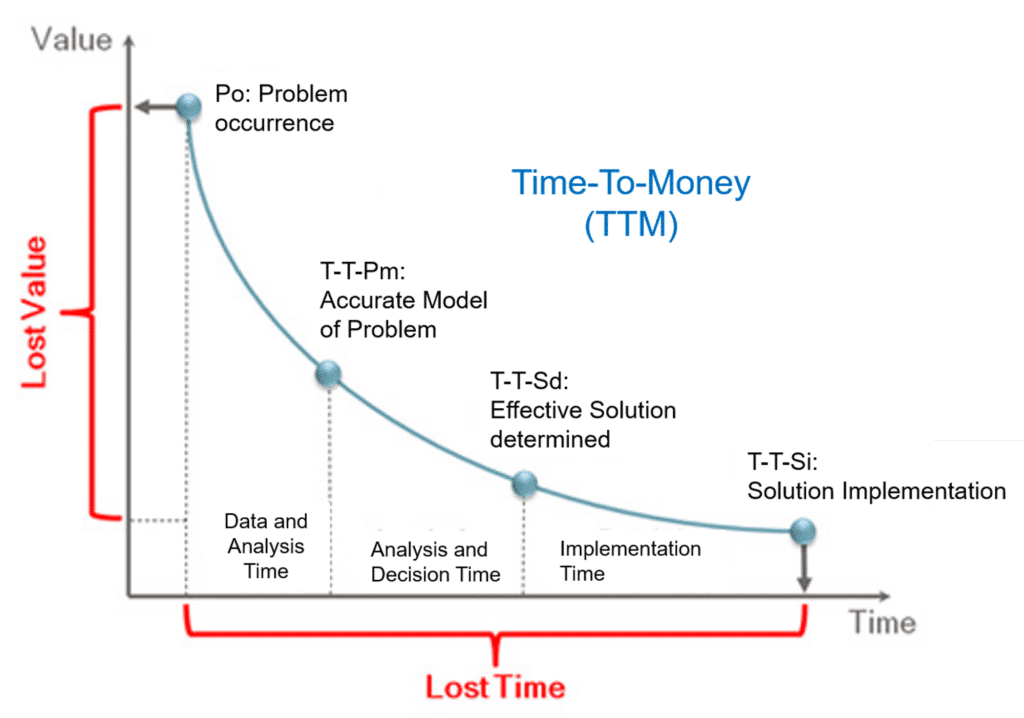
Technological innovations should focus on solving business challenges such as improving operational efficiency, enhancing existing revenue streams, creating new revenue streams, or improving process visibility to identify and resolve problems. Simply relying on “brainstorming” or trial and error engineering is inadequate when dealing with complex systems. A structured systematic problem-solving method and a solid theory are necessary for effective analysis, decision making, and synthesis.
Leading corporations like Samsung, LG Electronics, Boeing, Rolls Royce, General Electric, Hewlett-Packard, Motorola, and others have recognized the value of this approach to problem solving. However, due to confidentiality reasons, few firms publish the results of their efforts. Nevertheless, we have found an example from TSMC, a top semiconductor industry player known for its innovative methods in semiconductor process technology.
In a 2020 paper co-written by a technology manager from TSMC and Dr. Daniel Shu and two students from Taiwan’s National Tsing Hua University, they applied systematic innovative methods, specifically TRIZ, to address excessive nitrogen doping in the semiconductor process. They utilized these methods to generate multiple solutions to the layered problems they encountered within the equipment and the process itself, which were previously overlooked.
This article might interest you: How to find blockers? The power of Perception Mapping.
The TSMC team began by conducting a comprehensive analysis of the system, using a functional model to understand how the system components interacted and contributed to the excessive nitrogen doping.
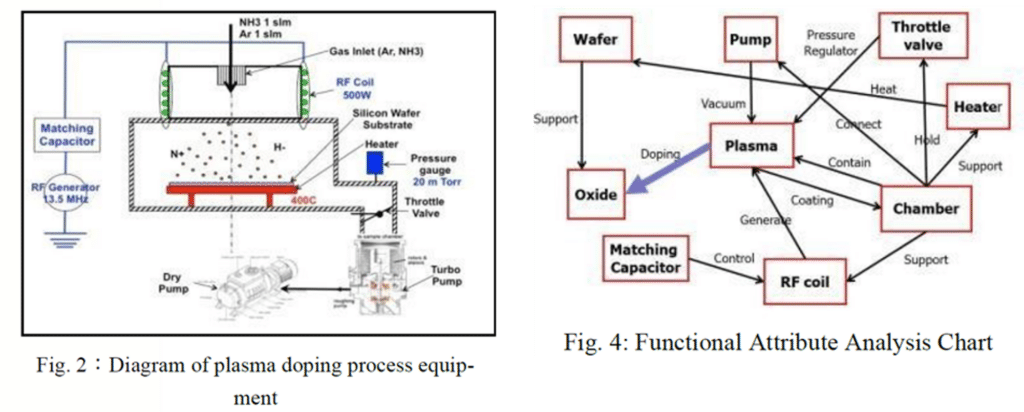
The next step they took was to conduct a Cause and Effect Chain Analysis to pinpoint the exact location, reasons, and mechanisms behind the excessive doping effect. This analysis helped identify the contradictions (compromise, sacrifice, and tradeoffs) that were occurring. They started by examining the “Target Disadvantages” and then systematically evaluated the impact of each component, its characteristics, and their interactions. This process led to the identification of the “Key Disadvantages” that were limiting the system’s performance.
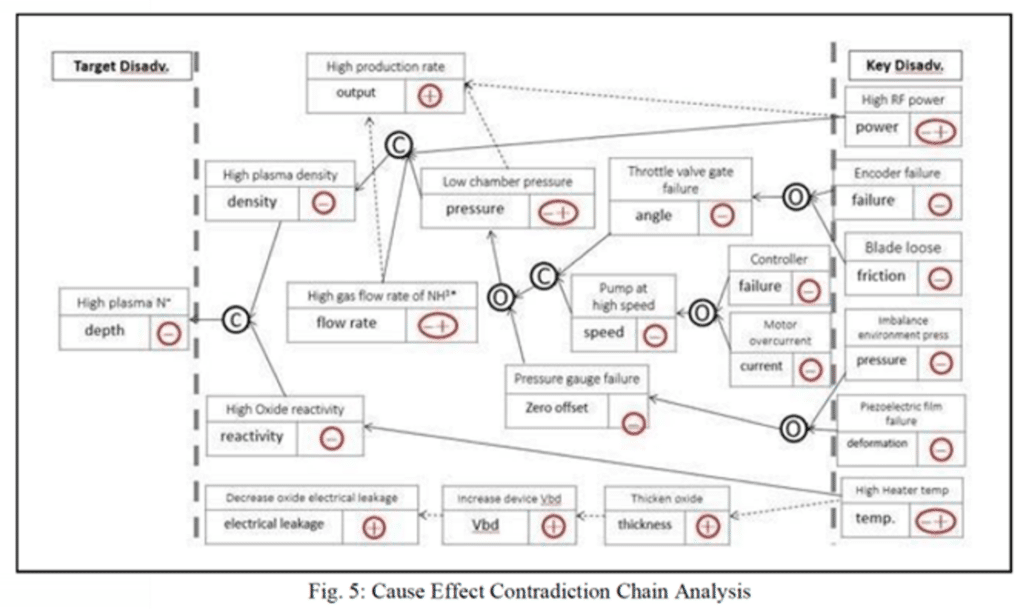
Through the Cause and Effect Chain Analysis of these contradictions, the TSMC team was able to utilize Inventive Principles to generate solutions for each step in the processing of the wafers with the nitrogen doping process.
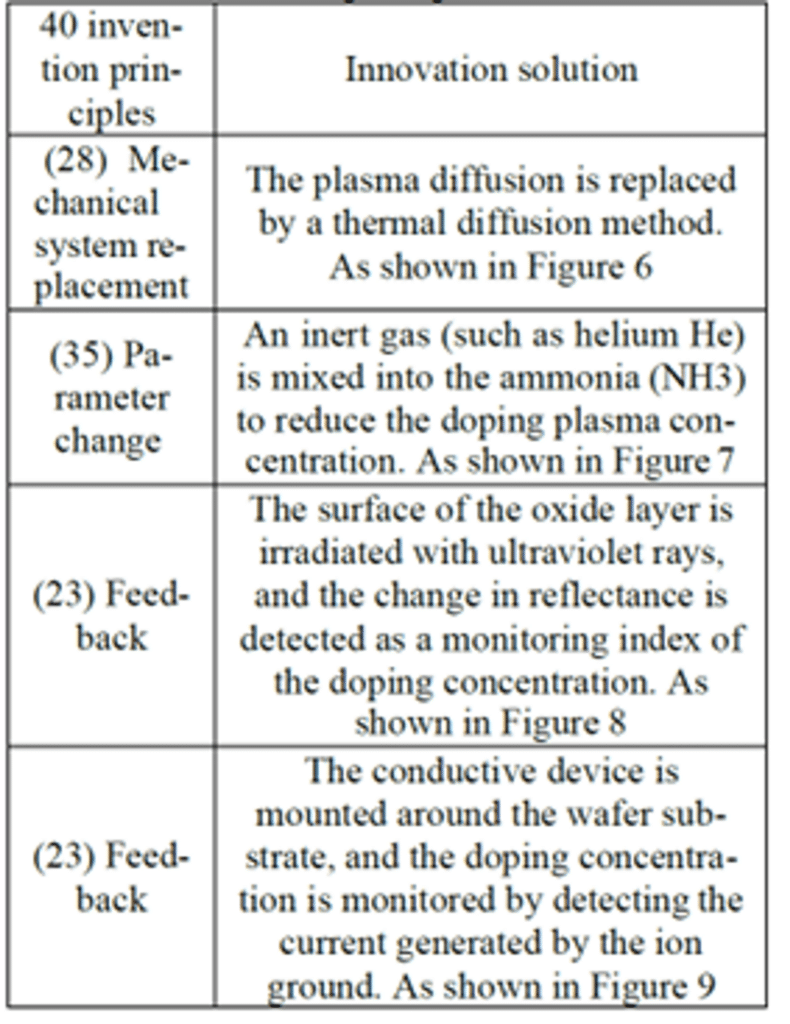
By applying a few of these 40 inventive principles, the team generated multiple concepts that targeted the key issues hampering the system’s performance. They also developed a solution set that tackled the complexity of the nitrogen doping system during wafer processing.
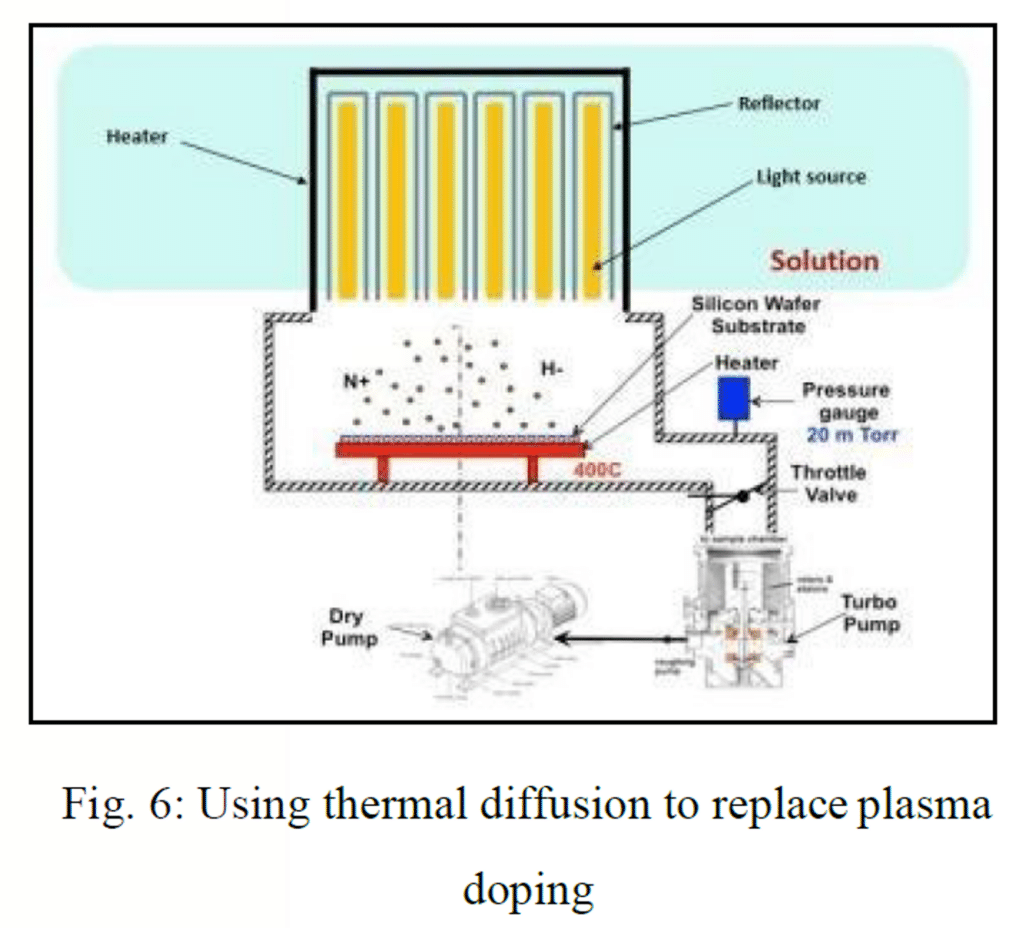
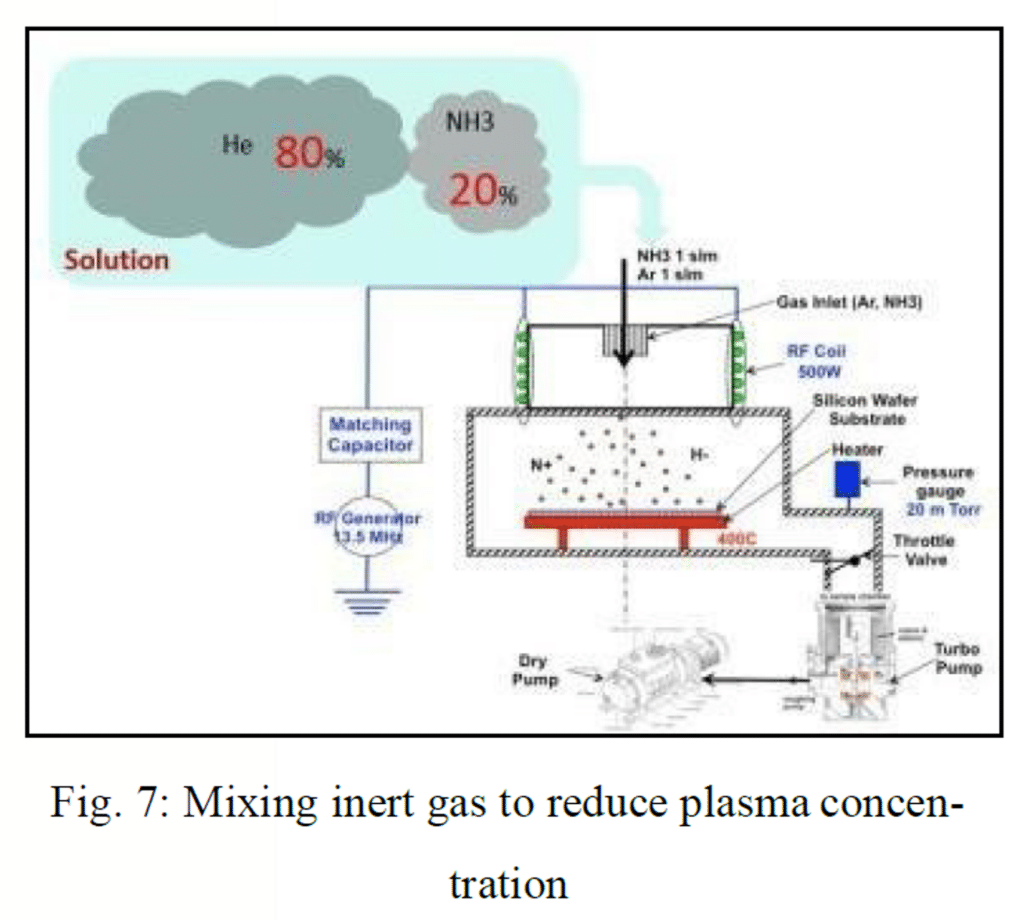
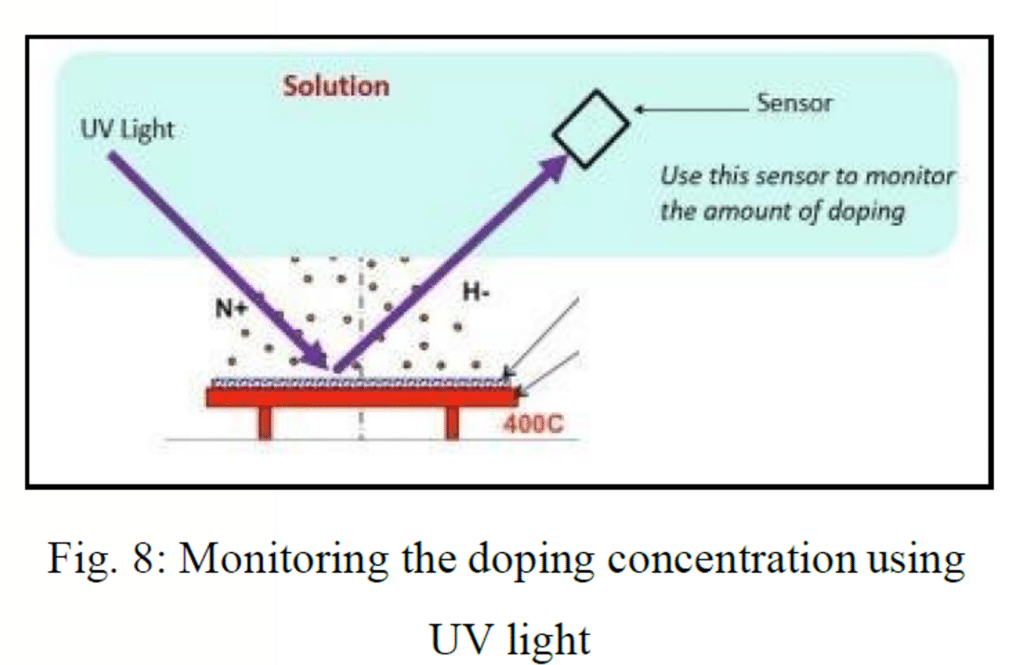
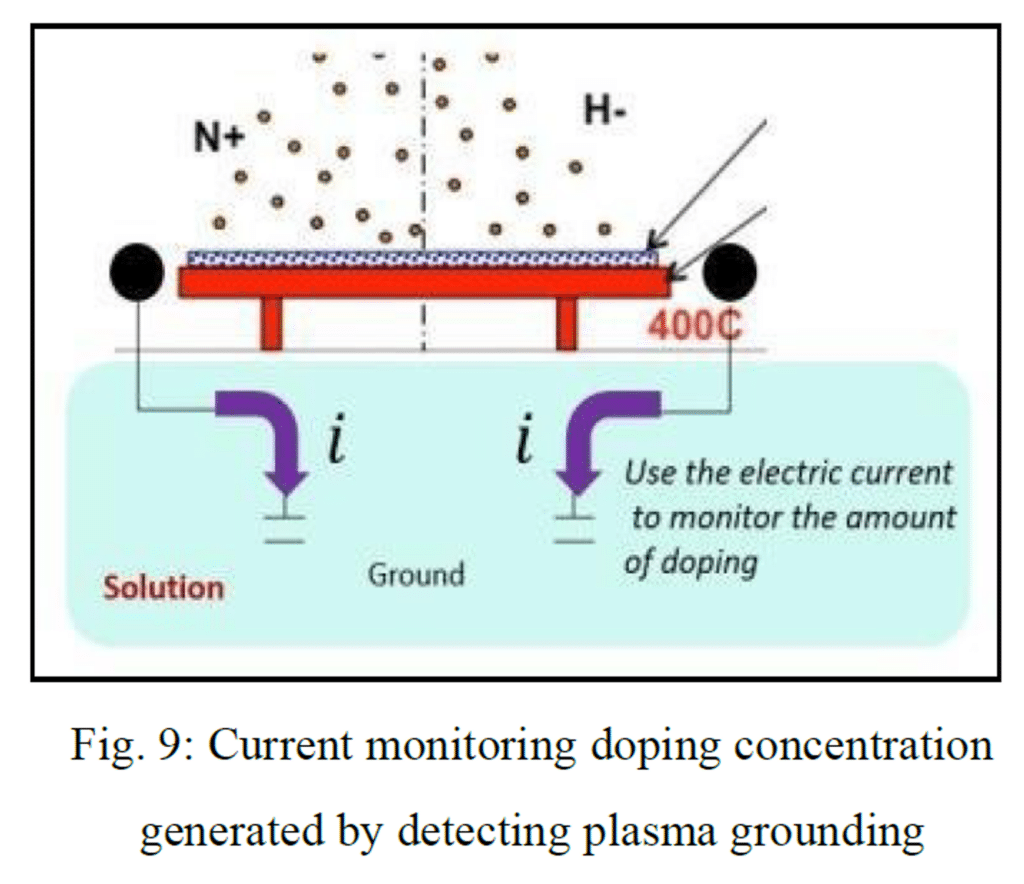
The nature of the solution sets created illustrates the complexity and intricacy of the problems involved in complex manufacturing processes. It is not just a single solution that is needed, but multiple solutions along the entire Cause and Effect Chain are required to effectively solve the problems that many industry processes face today.
As stated by the team in their paper, “we selected the ‘radio frequency power source pulse mode’ solution for verification. It has been experimentally verified that by adjusting the time-varying rate of the wireless RF power source from the original continuous operation mode to the pulse mode, the performance index of 20% nitrogen ion doping excess is effectively reduced. The result shows that this solution is a feasible strategy.”
“Experiments have proven that this systematic solution helps improve the problem.”
You can also adopt this more effective approach to problem-solving by utilizing the tools and best practices that the TSMC team achieved. At PRIZ.guru, we are here to assist you with our platform and training from our expert instructors. Please let us know if you would like to have a conversation on how we can help enhance your problem-solving process and address the challenges faced by your managers and engineers in your product development or process improvement teams.
Ref: Applying TRIZ Systematic Innovative Methods to Solve Semiconductor Photo Resist Remains
For further insights on this subject, we encourage you to explore our blog. At Priz Gurú, we are dedicated to streamlining creative processes. Feel free to return to us whenever you need.